The AFHSC-Division of GEIS Operations Predictive Surveillance Program: a multidisciplinary approach for the early detection and response to disease outbreaks
- PMID: 21388561
- PMCID: PMC3092411
- DOI: 10.1186/1471-2458-11-S2-S10
The AFHSC-Division of GEIS Operations Predictive Surveillance Program: a multidisciplinary approach for the early detection and response to disease outbreaks
Abstract
The Armed Forces Health Surveillance Center, Division of Global Emerging Infections Surveillance and Response System Operations (AFHSC-GEIS) initiated a coordinated, multidisciplinary program to link data sets and information derived from eco-climatic remote sensing activities, ecologic niche modeling, arthropod vector, animal disease-host/reservoir, and human disease surveillance for febrile illnesses, into a predictive surveillance program that generates advisories and alerts on emerging infectious disease outbreaks. The program's ultimate goal is pro-active public health practice through pre-event preparedness, prevention and control, and response decision-making and prioritization. This multidisciplinary program is rooted in over 10 years experience in predictive surveillance for Rift Valley fever outbreaks in Eastern Africa. The AFHSC-GEIS Rift Valley fever project is based on the identification and use of disease-emergence critical detection points as reliable signals for increased outbreak risk. The AFHSC-GEIS predictive surveillance program has formalized the Rift Valley fever project into a structured template for extending predictive surveillance capability to other Department of Defense (DoD)-priority vector- and water-borne, and zoonotic diseases and geographic areas. These include leishmaniasis, malaria, and Crimea-Congo and other viral hemorrhagic fevers in Central Asia and Africa, dengue fever in Asia and the Americas, Japanese encephalitis (JE) and chikungunya fever in Asia, and rickettsial and other tick-borne infections in the U.S., Africa and Asia.
Figures


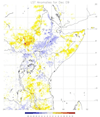
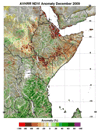


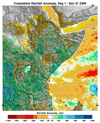


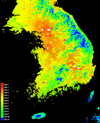

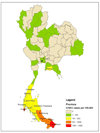



References
-
- Using climate to predict disease outbreaks: a review. http://www.who.int/globalchange/publications/oeh0401/en/pront.html
-
- Linthicum KJ, Anyamba A, Small J, Tucker CJ, Chretien JP, Britch SC, Pak E. Potential for Rift Valley to be introduced into North America. American Mosquito Control Association 74th Annual Meeting, Sparks, Nev.; 2008. pp. 13–14. Abstract 59.
Publication types
MeSH terms
LinkOut - more resources
Full Text Sources

